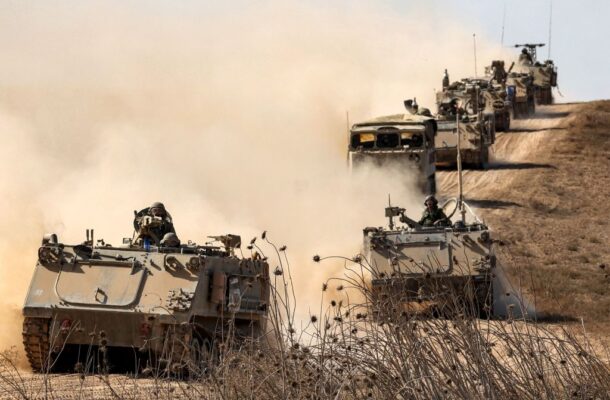Israel goes in

As any army officer will tell you, it’s very hard to achieve a destroy mission. Yet that is what, publicly at least, Israeli leaders have tasked the Israel Defense Forces to do. Prime Minister Benjamin Netanyahu vowed to ‘crush and destroy Hamas’, adding that ‘every Hamas member is a dead man’; Defence Minister Yoav Gallant promised to ‘wipe [them] off the face of the earth’ and said that they would ‘cease to exist’.
The IDF has been slightly more circumspect, saying variously that its mission is to ‘degrade and destroy Hamas’s capability to attack Israel’ or to ‘dismantle Hamas and its military capability’ and that it is targeting Hamas’s operational and government capabilities, including the group’s leadership.
There’s obviously a political imperative that drives members of Netanyahu’s government to use the words they use, given that it is a government on whose watch 1,200 Israelis were killed in the attack launched from Gaza on 7 October. And the ground phase of the Israeli response will be significant and consequential—as one spokesperson said, this is war, not another military operation. The Israeli air campaign has already been going for days and the ground campaign is not far off. Gallant has said that it will take weeks or months to achieve the military aim to eliminate Hamas.
So, what will mission success look like for Israel? Hostage recovery is obviously an immediate priority, and there’s no doubt that Hamas will pay an enormous price for it reckless and bloodthirsty attack that resulted in the deaths of hundreds of civilians, mostly Israelis but also many foreign nationals whose governments also hold Hamas accountable for their deaths. Israel has already indicated that this won’t be another mow-the-grass-style operation where ground forces’ incursions into Gaza are limited in duration and scope since the punitive effect is considered to have been sufficient to re-establish the rules of the game.
But the attack from Gaza did away with any concept of conflict norms, and because of that the region is entering uncharted territory. The number of civilians killed in Gaza has likely matched those killed in Israel already, and those numbers will only rise despite Israel’s direction that residents evacuate to the south of Wadi Gaza. Israeli ground and air forces will exact a frightening toll on Hamas during the course of the operation, setting back its operational capability by years. There’s no doubt that Hamas will be degraded to a larger extent than it has ever been before. But it is unlikely to be destroyed.
The big question, though, is what happens after the Israeli ground forces have prosecuted all the targets, cleared all the ground they have been required to clear and are left in the semi-deserted wasteland that is Gaza. If they seek to destroy Hamas, including its ability to govern, who will administer Gaza? To withdraw precipitously will simply allow Hamas, or those with similar views, to re-establish themselves, while the idea that the Palestinian Authority would be willing (or capable) of governing Gaza after an absence of 20 years is similarly fraught. And the idea that Israel would seek to re-occupy Gaza is untenable politically on many levels.
It’s likely that the Israeli government has yet to decide what happens after the bloodletting has been exhausted. For now, it’s time for war.
But if there’s one lesson that should have been learned from the US experience in Iraq, Afghanistan and elsewhere; the Gulf states in Yemen; and Israel’s own two-decade-long occupation of south Lebanon, it’s that it is always easier to forcibly enter a country than it is to leave it. While the desire for revenge is the dominant driver of the Israeli government at the moment, its desire to destroy Hamas may not be practically achievable. More importantly though, Israel’s leaders needs to start turning their minds now to what happens after that desire for revenge has been sated.
This article was published by The Strategist.
Rodger Shanahan is a Nonresident Fellow at the Lowy Institute. A former army officer, he had extensive service within the Parachute Battalion Group (PBG) and has had operational service with the UN in South Lebanon and Syria, with the PBG in East Timor, in Beirut during the 2006 war, and in Afghanistan.














